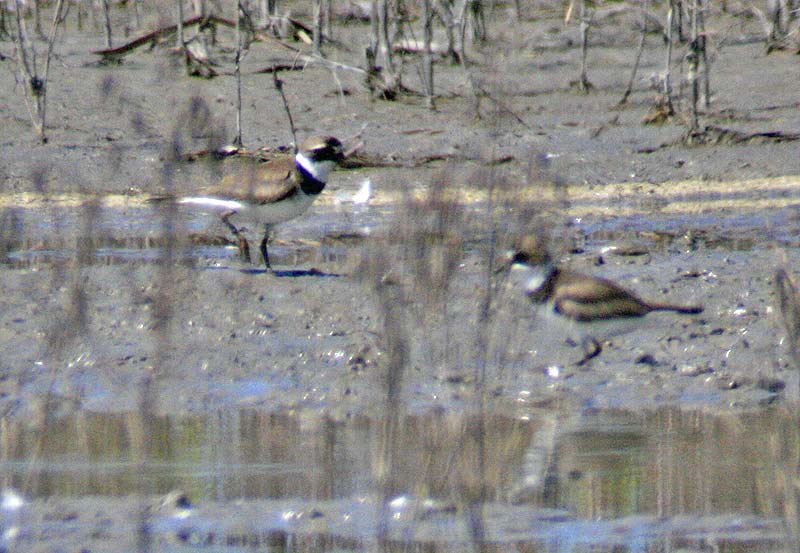
This SILENT Charadrius plover was at Tule Lake, Corpus Christi, TX on July 31,
2010. along with 6 normal-looking adult SEPLs. NOTE: when feeding in such soft mud the bill shape is often distorted by varying amounts of mud/water at the tip, such that it can look more-bulbous than it actually is - but it can't look more-slender than it actually is!
Note the black
reaching/surrounding the gape-point on both sides of the bill; the bill
shape/length looks good for CRPL and longer than any definite SEPL that I've studied:
The white eyebrow is fairly prominent - more-so than on male SEPL and fine for a male CRPL - but what age/sex is this bird? I find it hard to assess the areas of black/brown on the head, and although I think I can see some contrasts in the scaps suggesting a 2CY/AHY, if it were this age then the degree of black seems beyond that expected even for a male SELP of this age - and would a male 2CY/AHY SEPL have such distinct white eyebrow? Assuming it is a 3+CY/A2Y, again would a male SELP have such a prominent white eyebrow? if not then could a female SEPL have this much black in the plumage?
In one image a faint orbital ring is apparent, and of course both taxa have such a ring - but those of SEPL are comparatively yellower/more contrasing in each age/sex class.
Here the near-side leg is raised, so we are seeing the area between the central and outer toes; whatever webbing is present seems to be well within the range of CRPL - the question is:- is it less than the minimum for SEPL?:
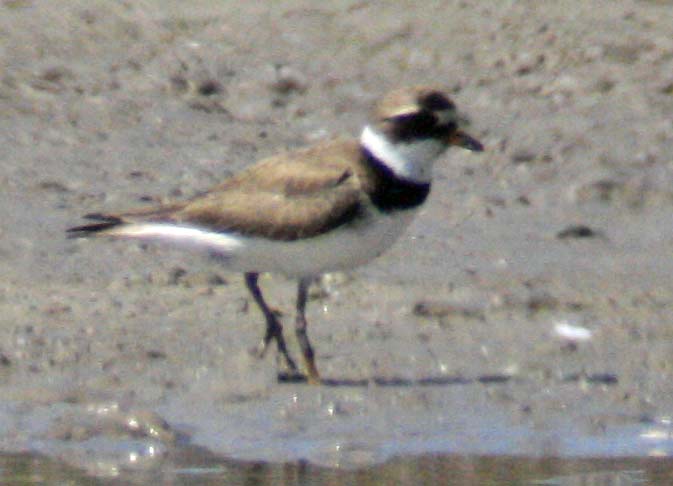
Here the left leg is raised, so again we are seeing the gap between the central and outer toes (I think):

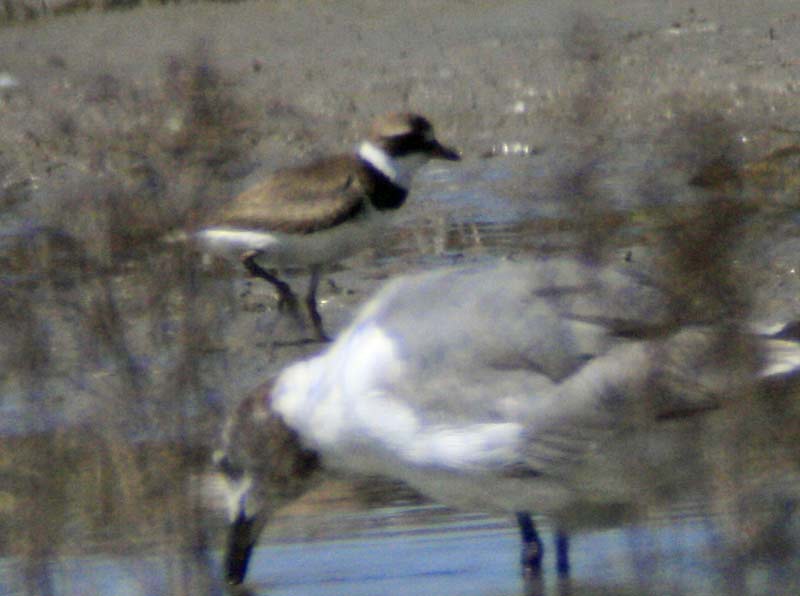
Again note the bill shape and length; it looks to me to be towards the long/slender end even for CRPL, and well beyond that on any otherwise typical SEPL that I've seen. Although the black on the loral area is a bit narrower than on the right side of the head, it is still prominent and seems to encompass the gape-point. Here its right leg is raised, so we are looking at the gap between the central and inner toes on the right side of the foot (from our perpective) , and between the central and outer toes on the left side of the foot:
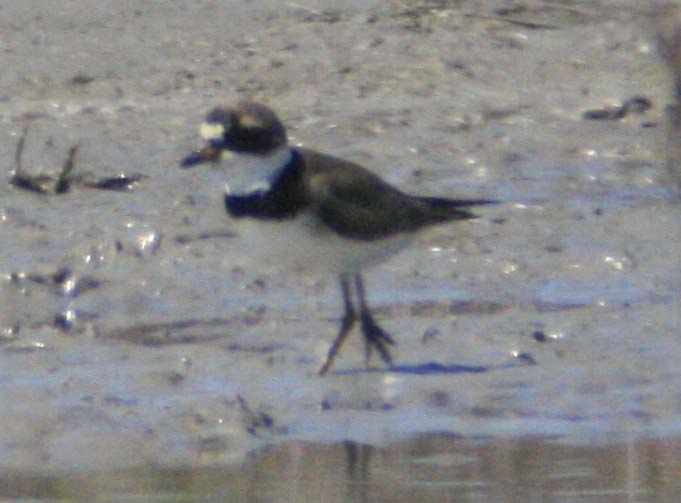
It is hard for still snapshots to convey a real-life comparison, and the potential for Size Illusion confounds an accurate comparison even in these images. All I can say is that in real life it was a bit larger than any SEPL it was close to, but looked more-attenuated in the rear. If there was any difference in actual color of the upperparts, the target individual - here on the right with a WESA in the middle - was just slightly darker than the SEPLs:
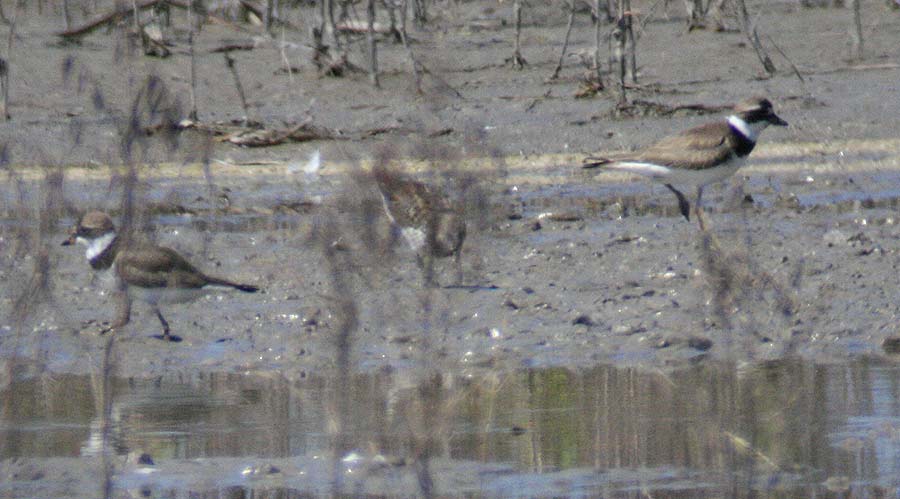
Here the target bird is on the left side of the image; the SEPL on the right is the same individual as in the image above:
